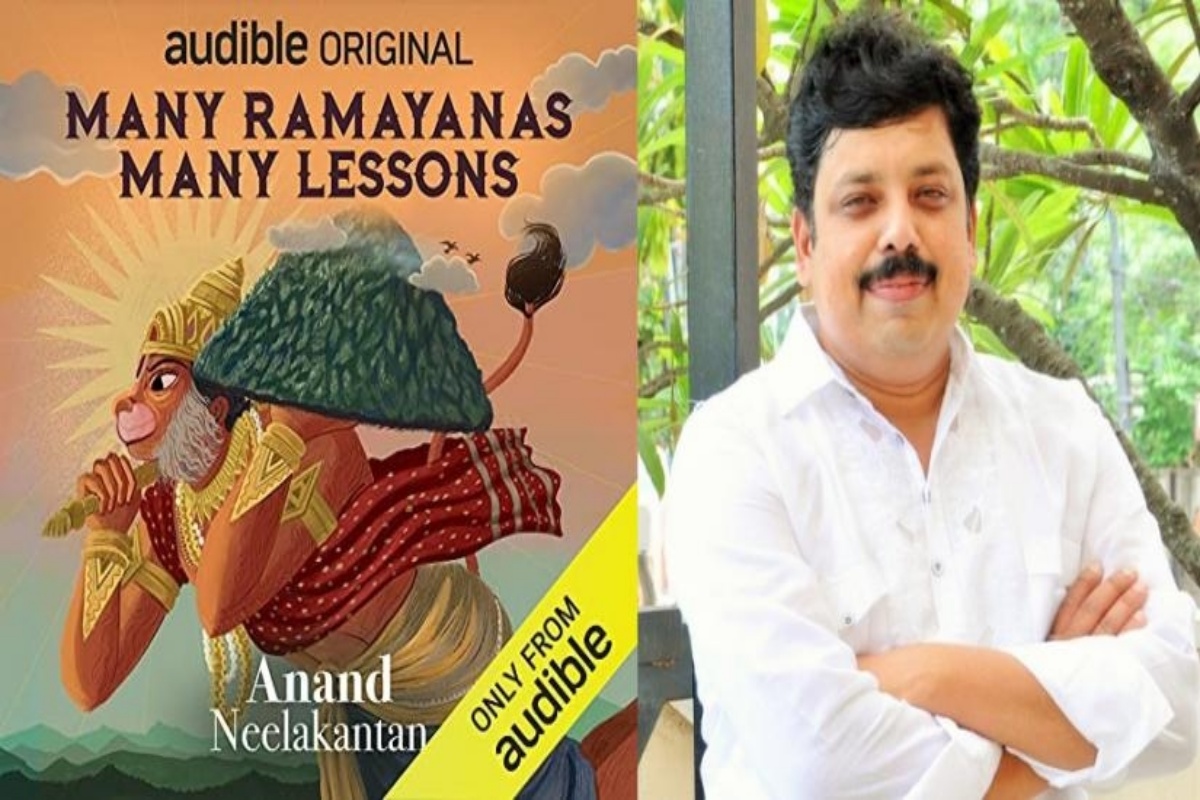‘Ramayana’ actor Ravi Dubey calls co-star Ranbir Kapoor an ‘elder brother’
In a recent conversation, 'Ramayana' actor Ravi Dubey talked about his equation with co-star Ranbir Kapoor, calling him an elder brother.
I am a mere storyteller, and I am just arranging some of the stories I have heard or read over the years and wondering aloud about their subtle meanings and what these stories mean to our lives.

No two Ramayanas are entirely similar: Author Anand Neelakantan.(photo:IANSLIFE)
The rich heritage of mythological epics in India has begun to reflect in the popular audiobook production and listenership. The latest in this direction is ‘Many Ramayanas & Many Lessons by Indias best-selling mythological fiction author Anand Neelakantan, launched on audio storytelling platform Audible.
This audiobook is available on Audible in both Hindi and English languages. Spread across 29 episodes, this audiobook is an attempt by Anand Neelakantan to introduce different versions of this great epic and draw enduring lessons for audiences of all ages. The story is told in chronological order, with each episode featuring different Greats like Sage Valmiki, the Lord Rama, Sage Vishwamitra, Sita, Bharata individually, thus taking interesting detours to introduce the various versions of this story that exist across Asia.
Advertisement
‘Many Ramayanas & Many Lessons’ has been narrated by Manish Dongardive and the Hindi version titled ‘Ramayana- Anek Kathayein, Anek Sandarbh’ has been narrated by Babla Kochhar.
Advertisement
Anand Neelakantan, the best-selling author and writer of the audiobook tells IANSlife: “Writing audiobooks is different from writing printed books. The word choices, the rhythm of writing, and the structure’s nuances take another form in audiobooks. I hope Many Ramayanas & Many lessons would be an immersive hearing experience.”
He says: “The Ramayana is one of India’s greatest epics and forms an integral part of our tradition of storytelling. Across Asia, there are close to 300 forms of the Ramayana that are known to exist including the popular version by Valmiki. Through Many Ramayanas & Many Lessons, I have attempted to create an immersive storytelling experience with different versions of the Ramayana to familiarise audiences with alternative theories and approaches that exist in various other cultures.”
IANSlife speaks to the author to know more:
There are not many tales that survive the test of time, as Ramayana and Mahabharata have. In addition to being a matter of faith, what makes these stories appeal to readers or listeners generation after generation?
Neelakantan: There are only two ways for stories to survive. One is by the imposition by some religious authorities that all the followers must read a particular book. Such books will endure as long as the religious authorities that impose them survive. The second way is for the book to evolve as per the needs of every generation. They need no religious authorities to impose the book’s reading, nor do they require to be uniform. Ramayana and Mahabharata belong to this category. Hence they transcend the borders of religion and culture as each culture can contribute to the corpus of these epics and make the epics their own. It evolves as per generation and culture. They are living tradition. As long as this freedom exists, it would remain relevant till the end of the human race.
The oral medium of passing down knowledge and legends kept many stories alive, historically. So your ‘Many Ramayanas & Many Lessons’ is returning in the audio medium, in a different, modern way. Thoughts?
Neelakantan: Oral medium is the oldest form of story and idea propagation. However, in the long history of human culture, literacy is a comparatively new concept. Oral stories keep changing as per the audience, and this adds to their vibrancy and relevance. A recorded audiobook may not have that much flexibility, but it remains closest to the original storytelling tradition. An audiobook can be a good travel companion. You can hear stories while you drive, exercise, or walk. When people find it challenging to squeeze in reading time in their busy schedules, audiobooks can be a lifesaver.
How was the process of collating and presenting different versions of Ramayana for this audiobook? What did the research entail?
Neelakantan: I have been collecting such stories for more than two decades now. All my books are based on oral stories that I had collated over the years. In this book, I used my previous notes that gave birth to my works like Asura, the tale of the vanquished, Vanara or Valmiki’s women.
Did you face any challenges during the compilation, like any conflicting story angles?
Neelakantan: No two Ramayanas are entirely similar. There are many conflicting and contradicting stories, and that is what makes them so attractive. I am not trying to claim there is one authentic Ramayana. There isn’t. Nor am I trying to give a research document about Ramayana tradition. I neither have the scholarship or the erudition for doing the same. I am a mere storyteller, and I am just arranging some of the stories I have heard or read over the years and wondering aloud about their subtle meanings and what these stories mean to our lives.
Advertisement